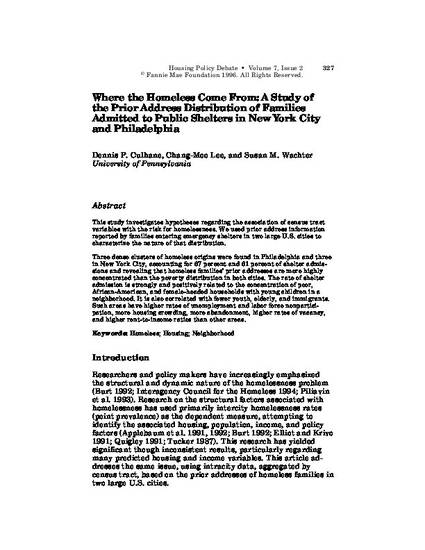
This study investigates hypotheses regarding the association of census tract variables with the risk for homelessness. We used prior address information reported by families entering emergency shelters in two large U.S. cities to characterize the nature of that distribution.
Three dense clusters of homeless origins were found in Philadelphia and three in New York City, accounting for 67 percent and 61 percent of shelter admissions and revealing that homeless families’ prior addresses are more highly concentrated than the poverty distribution in both cities. The rate of shelter admission is strongly and positively related to the concentration of poor, African-American, and female-headed households with young children in a neighborhood. It is also correlated with fewer youth, elderly, and immigrants. Such areas have higher rates of unemployment and labor force nonparticipation, more housing crowding, more abandonment, higher rates of vacancy, and higher rent-to-income ratios than other areas.
- homeless,
- housing,
- neighborhood,
- poverty distribution,
- rent-to-income ratio
Available at: http://works.bepress.com/dennis_culhane/21/

We have contacted the publisher regarding the deposit of this paper in ScholarlyCommons@Penn. No response has been received.